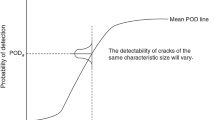Abstract
In this chapter, several basic types of experimental tools for different situations of reliability analysis are introduced, together with the working principles. After that, tools being used to do accelerate testing are also presented.
Optical microscopy (OM), scanning electron microscopy (SEM), energy-dispersive X-ray (EDX), scanning acoustic microscopy (SAM), and moiré interferometry are used to measure the structure and geometry of the testing sample. Besides, low-cycle fatigue, shear, humidity, temperature, thermal shock, and thermal cycling tests could be done with the help of special types of machines.
Access this chapter
Tax calculation will be finalised at checkout
Purchases are for personal use only
Similar content being viewed by others
References
R. Tummala, Fundamentals of Microsystem Packaging, New York: McGraw-Hill, 2001.
D. Post, J. D. Wood, “Determination of Thermal Strains by Moiré Interferometry”, Experimental Mechanics, 29(3), 1989, 318–322.
B. Han, “Recent Advancements of Moiré and Microscopic Moiré Interferometry for thermal Deformation Analyses of Microelectronics Devices”, Experimental Mechanics, 38(4), 1998, 278–288.
B. Han, D. Post, “Immersion Interferometer for Microscopic Moiré Interferometry”, Experimental Mechanics, 32(1), 1992, 38–41.
J. W. Joo, K. W. Oh, S. M. Cho, B. Han, “Thermo-Mechanical and Flexural Behavior of WB-PBGA Package Using Moiré Interferometry”, Proceedings of 3rd International Symposium on Electronic Materials and Packaging, Cheju Island, Korea, 2001, 421–427.
J. S. Zhu, D. Q. Zou, F. L. Dai, S. Liu, “High Temperature Deformation of High Density Interconnects and Packages by Moiré Interferometry/FEM Hybrid Method”, Proceedings of 19th IEEE/CPMT International Electronics Manufacturing Technology Symposium, Austin, TX, USA, 1996, 75–83.
S. Liu, J. J. Wang, D. Q. Zou, X. Y. He, Z. F. Qian, “Resolving Displacement Field of Solder Ball in Flip-Chip Package by Both Phase Shifting Moiré Interferometry and FEM modelling”, Proceedings of 48th Electronic Components and Technology Conference (ECTC), Seattle, WA, USA, 1998, 1345–1353.
E. A. Stout, N. R. Sottos, A. F. Skipor, “Mechanical Characterization of Plastic Ball Grid Array Package Flexure Using Moiré Interferometry”, IEEE Transactions on Advanced Packaging, 32(4), 2000, 637–645.
X. Q. Shi, Z. P. Wang, “In-Situ Moiré Interferometry Technique and Its Applications to Microelectronic Packages”, Proceedings of 52nd Electronic Components and Technology Conference, San Diego, USA, 2002, 183–191.
W. S. Kwon, S. J. Ham, K. W. Paik, “Deformation Mechanism and Its Effect on Electrical Conductivity of ACF Flip Chip Package under Thermal Cycling Condition: An Experiment Study”, Microelectronics Reliability, 46(2–4), 2006, 589–599.
T. K. Hwang, S. J. Ham, S. B. Lee, “A Study on the Thermal Deformation of ACF Assemblies Using Moiré Interferometry and FEM”, International Symposium on Electronic Materials & Packaging, Hong Kong, China, 2000, 358–363.
H. Ding, R. E. Powell, C. R. Hanna, I. Charles Ume, “Warpage Measurement Comparison Using Shadow Moiré and Projection Moiré Methods”, IEEE Transactions on Components and Packaging Technologies, 25(4), 2002, 714–721.
Author information
Authors and Affiliations
Corresponding author
Exercises
Exercises
-
11.1
Consider and try to explain why does shear speed have an obvious effect on failure mode?
-
11.2
What is the difference between thermal shock testing and thermal cycling testing?
-
11.3
Calculate the displacement of the solder joint in the following picture (here the virtual frequency is f = 2,400 line/mm).

-
11.4
How can we find the glass transition temperature of a conductive adhesive system? Explain the mechanism.
-
11.5
In which way(s) can we do accelerated aging tests?
Rights and permissions
Copyright information
© 2011 Springer Science+Business Media, LLC
About this chapter
Cite this chapter
Liu, J., Salmela, O., Särkkä, J., Morris, J.E., Tegehall, PE., Andersson, C. (2011). Experimental Tools for Reliability Analysis. In: Reliability of Microtechnology. Springer, New York, NY. https://doi.org/10.1007/978-1-4419-5760-3_11
Download citation
DOI: https://doi.org/10.1007/978-1-4419-5760-3_11
Published:
Publisher Name: Springer, New York, NY
Print ISBN: 978-1-4419-5759-7
Online ISBN: 978-1-4419-5760-3
eBook Packages: EngineeringEngineering (R0)





